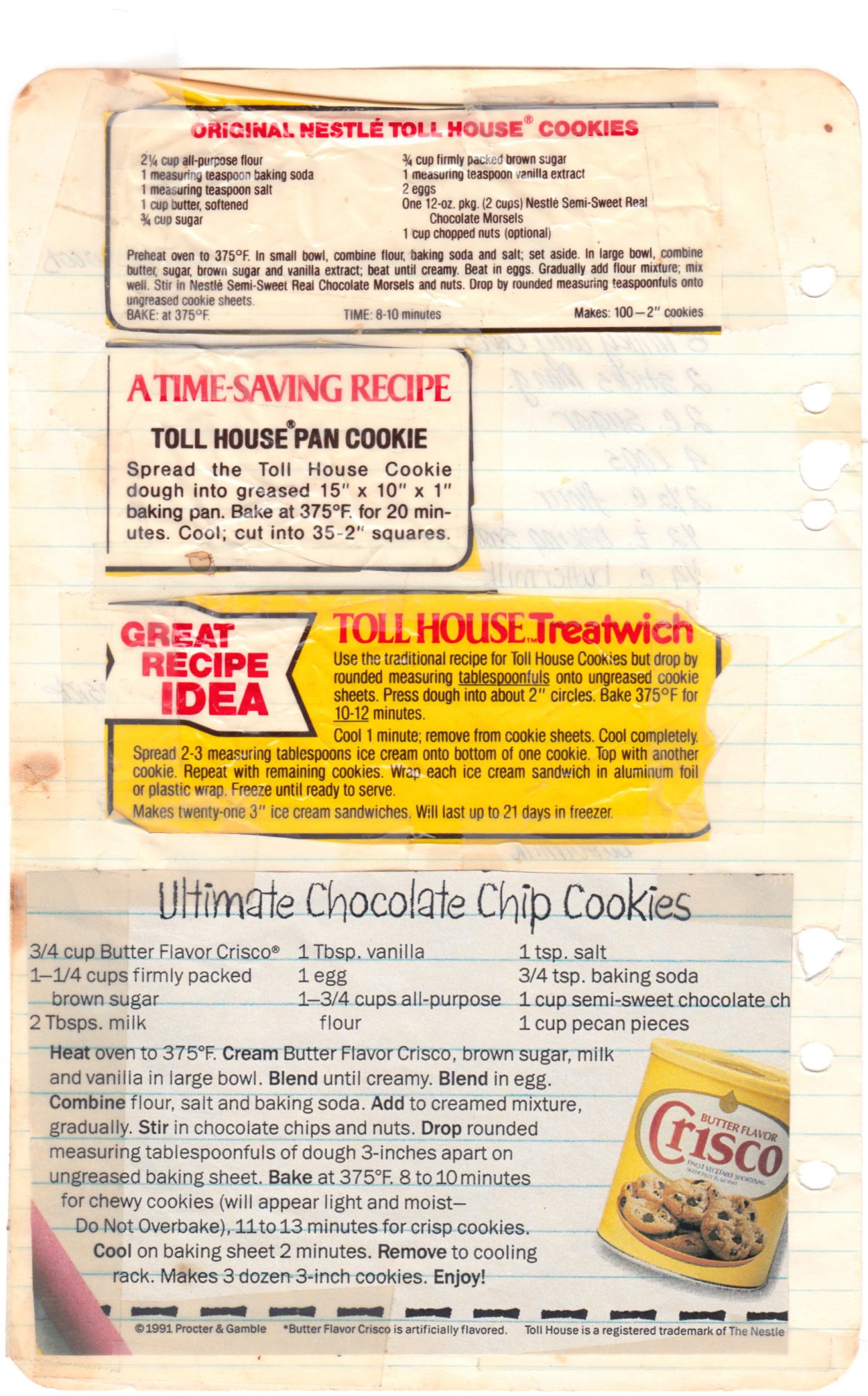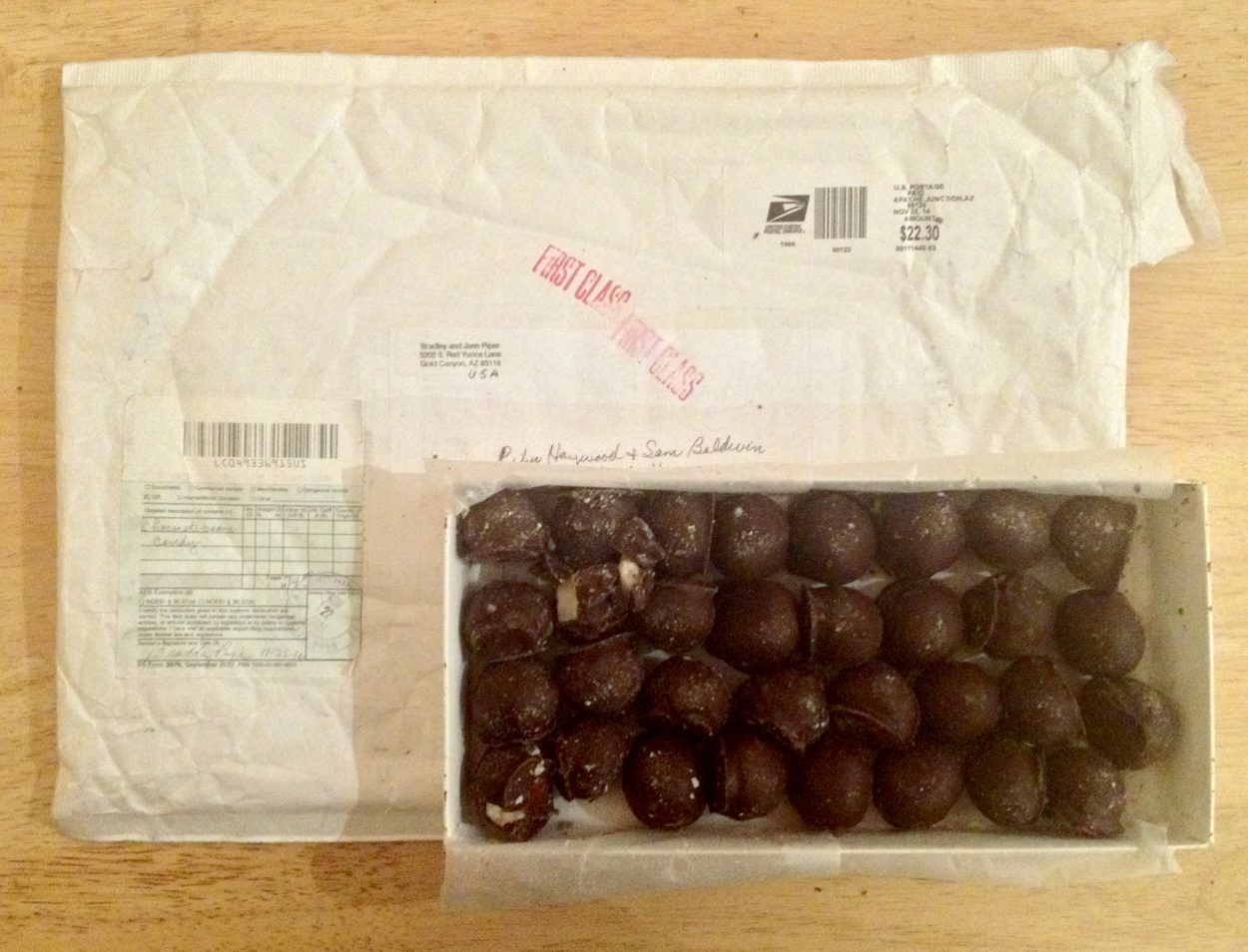Published
What a cake
EL and KT came over for dinner last weekend and brought cake. WHAT A CAKE.
It was a chocolate coffee crunch cake. I asked EL, basically it’s this chocolate cake with coffee whipped cream and honeycomb as per this Serious Eats recipe.
It was insanely good. Super decadent, but also somehow very light. Just the perfect texture.
The cake itself kind of reminded me of a cake from a long time ago, so I dug out my grandma’s recipe book again. Turns out my great-aunt’s Texas Sheet Cake recipe (jump to recipe, though I recommend reading the critical notes first) is pretty similar in a lot of ways. Most of the measurements are the same, and both are pretty much one-bowl recipes that call for boiling water.
I haven’t made it recently, but it seems to me that it might be a bit denser / richer than the cake recipe linked above since it has more fat and less milk (1 c butter and ½ c buttermilk in the sheet cake versus ½ c oil and 1 c buttermilk/milk in the layer cake). A denser texture would make sense I suppose for a single-layer cake.
I think the recipe above makes more sense for a layer cake, but I’ll write my great-aunt’s recipe out below since the many-times-Xeroxed version in my grandma’s cookbook is almost unreadable and since it might be worth trying this out with the coffee whipped cream + honeycomb topping.
A few critical notes about the sheet cake recipe:
- The most notable differences between the sheet cake below and the layer cake linked above is the quantity of cocoa (3 T = ⅛ c in the sheet cake versus ¾ c in the layer cake) and the presence of espresso powder (none in the sheet cake versus 1 t in the layer cake). I suspect it would benefit from a stronger chocolate kick… So maybe it would be worth adding more cocoa powder.
- I’ve added the metric measurements below by using the Traditional Oven converters online. They’ve never failed me yet, but I should say that I haven’t tried these exact metric measurements so can’t vouch for them. If you want Marie’s original version, go with cups.
- I’ve written the “preparation” section more or less exactly as my great-aunt wrote it. I do actually think it could be simplified though, probably more along the lines of the recipe that EL shared and linked above where you essentially mix all of the dry ingredients + sugar, then beat in the wet ingredients, then carefully beat in boiling water. But I haven’t tried it myself!
- This recipe calls for buttermilk, whereas the layer cake recipe linked above calls for whatever milk you have on hand. I have a feeling that you really do need to use buttermilk or faux buttermilk (milk + lemon juice or vinegar) for this recipe to work since it only calls for 1 t of baking soda. If you don’t have buttermilk or can’t make faux buttermilk, I’d probably add some baking powder.
- This recipe doesn’t call for salt, I think because she assumed you were using salted butter. If using unsalted butter, add ½ t salt as well.
Texas Sheet Cake
Marie Longman
Ingredients
- 2 c (400 g) sugar
- 2 c (250 g) flour
- 2 sticks (1 c, 226 g) butter
- 3 T (⅛ c, 15 g) cocoa powder
- 1 c (235 ml) water
- ½ c (118 ml) buttermilk*
- 2 large eggs
- 1 t baking soda
- 1 t cinnamon
- 1 t vanilla
Preparation
- Oil and flour a 15″×10″×1″ jelly roll pan, and preheat the oven to 350F (175C).
- In a large mixing bowl, briefly stir together 2 c sugar and 2 c flour.
- In a small pot, bring 2 sticks (1 c) butter, 3 T cocoa powder, and 1 c water to a boil, then pour it over the flour and sugar mixture.
- Add ½ c buttermilk, 2 eggs, 1 t baking soda, 1 t cinnamon, and 1 t vanilla to the bowl with the other ingredients, then beat everything together just until smooth.
- Spread the batter in to your prepared jelly roll pan, then bake for 17-20 minutes at 350F (175C) until a toothpick inserted in to the center comes out clean.
- Let cool completely, and then top with the frosting of your choice.
* To make ½ c buttermilk, pour ½ T of lemon juice, distilled white vinegar, or cider vinegar in to a ½ c measurement and then top it up the rest of the way with the milk of your choice. Actual dairy products will curdle when they hit the acid, which is what you want.

